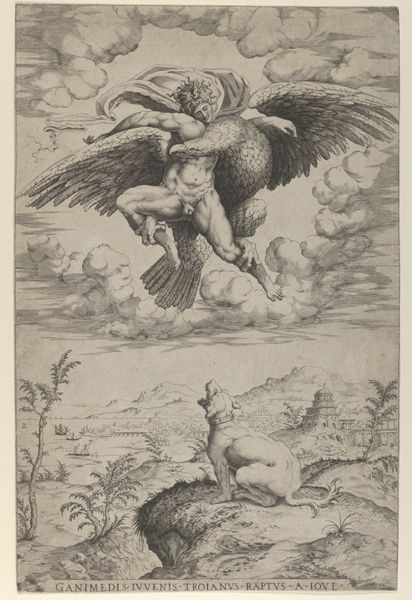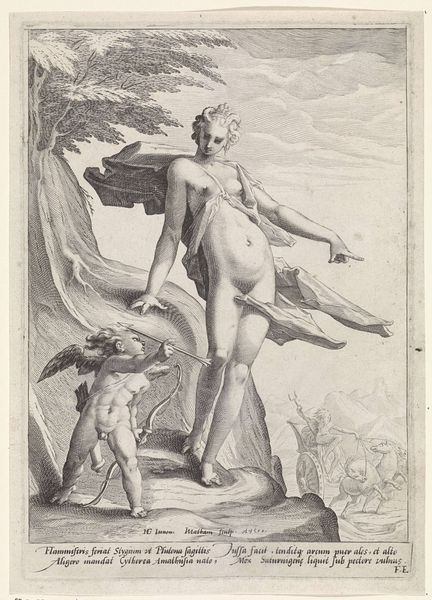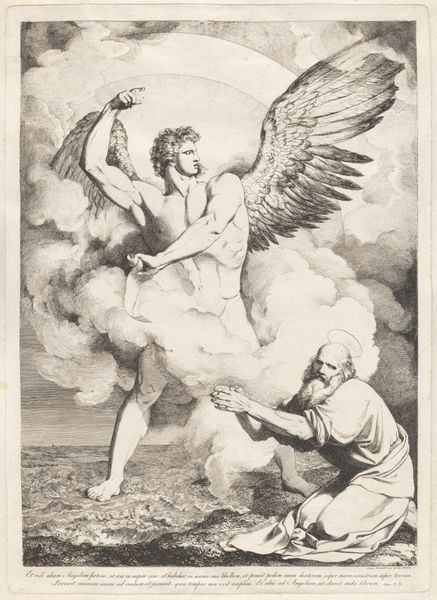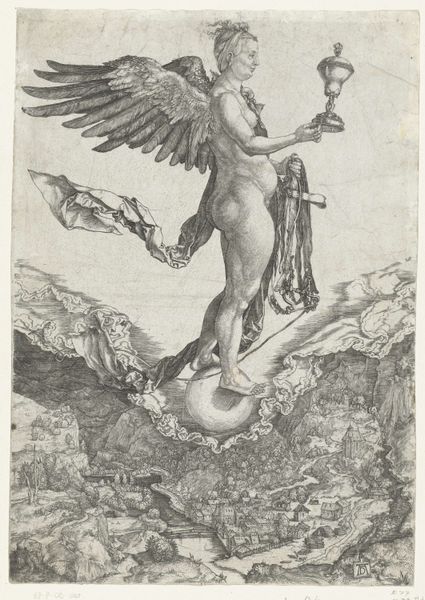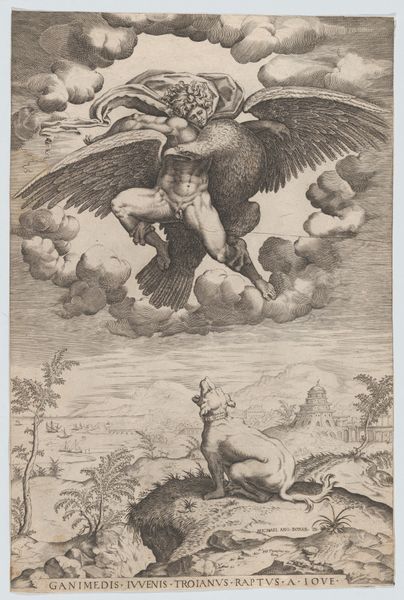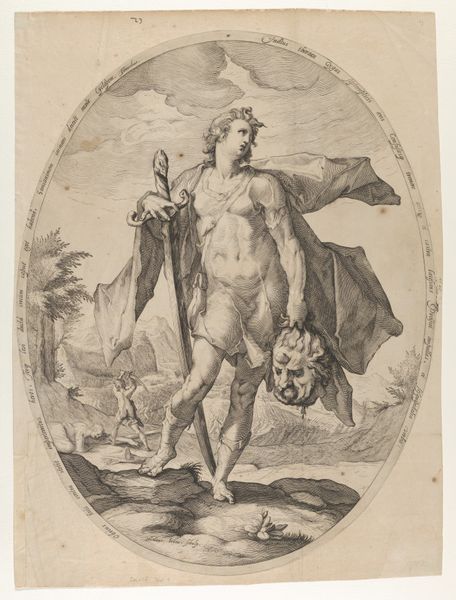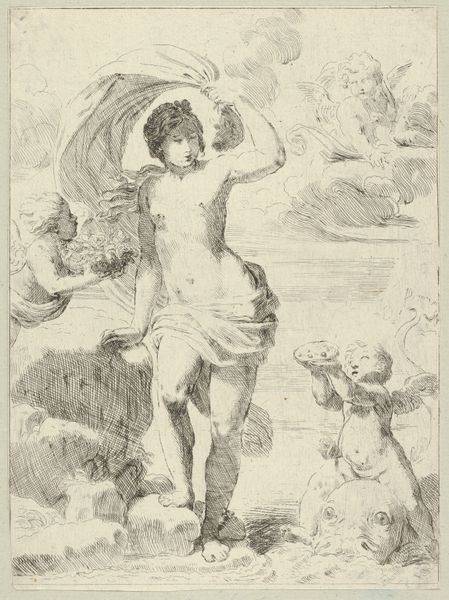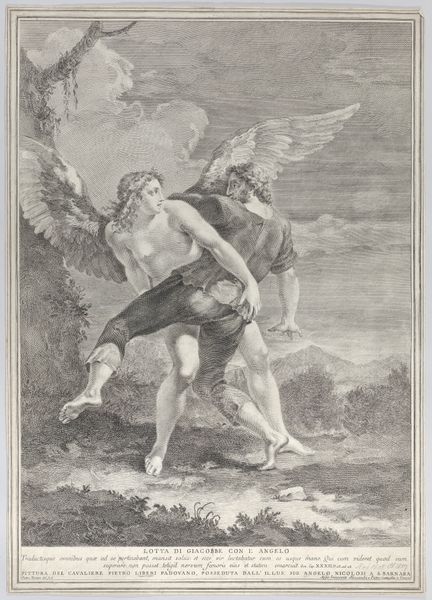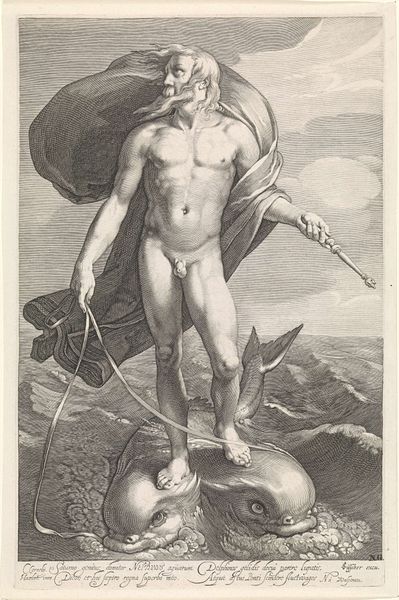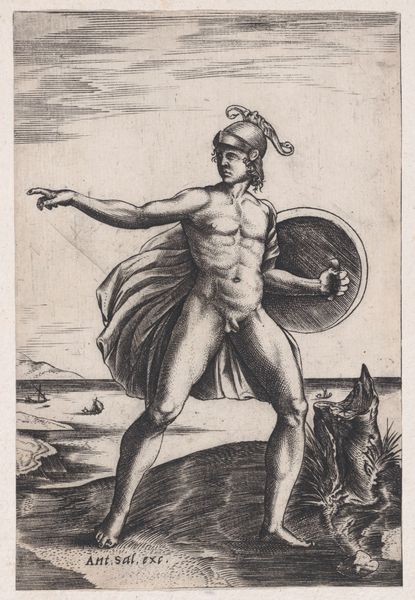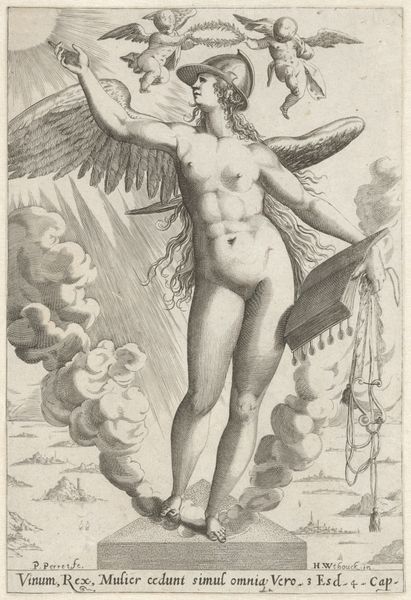
print, engraving
#
neoclacissism
#
allegory
# print
#
landscape
#
classical-realism
#
figuration
#
nude
#
engraving
Dimensions: plate: 22 x 16.9 cm (8 11/16 x 6 5/8 in.) sheet: 27.8 x 38.4 cm (10 15/16 x 15 1/8 in.)
Copyright: National Gallery of Art: CC0 1.0
Curator: This engraving is titled “The Rape of Ganymede” by Salomon Gessner, dating back to 1769-1771. What strikes you immediately about this interpretation of the classical myth? Editor: It’s fascinating how Gessner presents this abduction. There’s a soft, almost pastoral quality to it, despite the violence implied in the title. The crispness of the line work really lends itself to this idyllic feel. The rendering of the landscape is so detailed, especially the wispy clouds, but then Ganymede's pose, with the stick and raising his arm feels so calm in this context. It is really unusual for such dramatic theme. Curator: Indeed. Gessner, a Swiss artist, was working within a Neoclassical framework, drawing heavily on classical themes and aesthetics, though often with this pastoral twist. But 'rape' here shouldn't be taken literally. It refers more to an abduction, or a seizing, and aligns with interpretations prevalent during the late 18th century that viewed the myth as an allegory for divine love and elevation, where Ganymede becomes the cupbearer of Zeus. Editor: That’s a crucial point, and it contextualizes the artwork further. Looking at the form itself, there's a clear focus on idealized anatomy, balanced by a rather interesting use of contrasting textures. Look at how Gessner differentiates between the smooth skin of Ganymede and the feathery textures of the eagle. The landscape too shifts from finely rendered vegetation to softer lines creating distance. The overall composition has a powerful but subtle elegance that the crisp lines support. Curator: The print's existence in the late 18th century, during the Enlightenment, suggests the persistence of classical myths within a society reassessing traditional hierarchies and embracing reason. Gessner wasn't merely illustrating a story; he was engaging in a cultural dialogue, offering his interpretation to viewers steeped in classical literature and contemporary philosophical discourse. This reimagining could be seen as an artistic nod to enlightened ideas, where the relationship between mortal and divine, and the nature of power, are being subtly reevaluated. Editor: So it’s about the elevation through beauty as well as power? I see that so clearly now as the figure seems less and less of victim, but stands almost naturally against this wild landscape, yet fully a part of it, as much as any of the leaves on the trees. It's fascinating how a seemingly simple image holds such complex tensions. Curator: It's precisely that tension which allows "The Rape of Ganymede" to be an image which moves us across the years and opens a fascinating window into the cultural and intellectual landscape of the late 18th century. Editor: Agreed. A close viewing really helps one see the dialogue between form and allegory in his engraving.
Comments
No comments
Be the first to comment and join the conversation on the ultimate creative platform.

